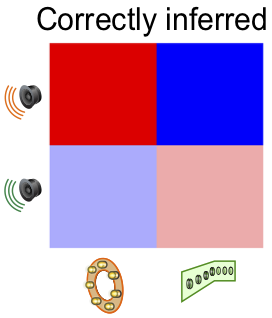Neuronal Computation Underlying Inferential Reasoning in Humans and Mice.
Everyday we use our memory to guide the decisions we make. We can even infer relationships between separate life events. Yet, it is not clear how the brain supports this process. Here, by conducting experiments with both mice and people, we show that brain cells in a region called the hippocampus support inference by linking memories for separate life events.
Every day we make decisions critical for adaptation and survival. We repeat actions with known consequences. But we also draw on loosely related events to infer and imagine the outcome of entirely novel choices. These inferential decisions are thought to engage a number of brain regions; however, the underlying neuronal computation remains unknown. Here, we use a multi-day cross-species approach in humans and mice to report the functional anatomy and neuronal computation underlying inferential decisions. We show that during successful inference, the mammalian brain uses a hippocampal prospective code to forecast temporally structured learned associations. Moreover, during resting behavior, coactivation of hippocampal cells in sharp-wave/ripples represent inferred relationships that include reward, thereby "joining-the-dots" between events that have not been observed together but lead to profitable outcomes. Computing mnemonic links in this manner may provide an important mechanism to build a cognitive map that stretches beyond direct experience, thus supporting flexible behavior.

2019. Cell, 176(6):1393-1406.e16.